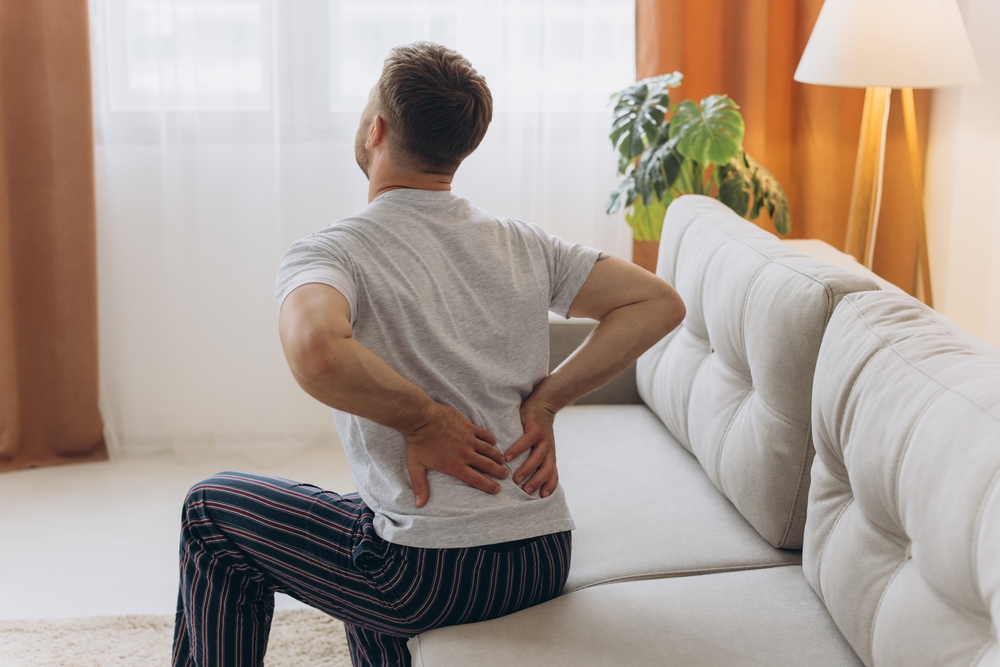Lower back pain is a pervasive issue affecting millions around the globe. It can inhibit daily activities and diminish the quality of life.
In this guide, we’ll give you comprehensive strategies for managing lower back pain, focusing on improving posture, incorporating specific exercises, and making practical lifestyle adjustments.
Understanding Lower Back Pain
Lower back pain can stem from various sources, including muscle strains, poor posture, herniated discs, or chronic conditions such as arthritis. Properly identifying the source with the guidance of a healthcare professional is crucial, as this allows for targeted treatments that are more likely to be effective.
Understanding whether your pain is acute or chronic is also important, as it can influence the best approach to management.
Acute pain typically comes on suddenly and is usually the result of damage such as a sprained ligament or muscle strain. Chronic pain, on the other hand, develops over time and often cannot be traced back to a single incident. It may result from age-related changes to the spine, underlying diseases, or repetitive stress injuries.
1. Maintain Proper Posture
Good posture is essential for reducing stress and strain on your back, which can help prevent and alleviate lower back pain. When sitting, choose a chair that supports your spinal curves, keep your feet flat on the ground, and avoid crossing your legs. Your computer screen should be at eye level so you don’t have to strain your neck by looking up or down.
When standing, keep your knees slightly bent and your posture upright with your shoulders back and abdomen in. This alignment distributes weight evenly across the muscles and ligaments, reducing the burden on any one structure. Additionally, when lifting heavy objects, always bend at the knees and lift with your legs rather than your back. This helps avoid strain on your lower back.
Negative Effects of Bad Posture
Incorrect posture can lead to significant health issues beyond simple back pain. Chronic poor posture can cause severe back, neck, and shoulder pain, significantly impacting your ability to move and function effectively. It can also lead to reduced lung capacity, poor circulation, and increased wear and tear on your spine, leading to long-term health problems such as degenerative disc disease and herniated discs. Furthermore, poor posture can affect digestion and even cardiovascular health by compressing internal organs and reducing blood flow.
2. Stay Active
Regular physical activity is crucial in managing lower back pain. It not only helps keep the weight off, which reduces stress on the spine, but also strengthens the muscles around the spine, providing better support and reducing the likelihood of pain.
Low-impact exercises such as walking, swimming, and cycling are particularly beneficial because they don’t place too much strain on the back. Yoga and Pilates can also be helpful, as they focus on core strength, flexibility, and correct alignment.
Strengthening your core muscles, which include the muscles around your trunk and pelvis, is particularly important as they support your lower spine. Additionally, regular exercise helps maintain mobility and flexibility, which can prevent pain from becoming chronic.
3. Manage Pain with Heat and Cold
Heat and cold therapies can be very effective in managing lower back pain. Cold therapy reduces inflammation and numbs sharp pain. It is particularly effective right after you’ve injured your back.
An ice pack wrapped in a towel can be applied to the affected area for 20 minutes every couple of hours during the first 48 hours after the pain begins.
After the initial two days, when the inflammation has likely subsided, you can start applying heat. Heat therapy facilitates the healing process by increasing blood flow to the area. It also relaxes tight muscles and relieves aching joints. A heating pad or a warm bath can be very soothing and can be applied for 20 minutes at a time.
4. Weight Management
Maintaining a healthy weight is essential for managing lower back pain. Excess body weight puts additional pressure on the spine and joints, exacerbating pain and potentially leading to further injury.
A balanced diet rich in fruits, vegetables, lean protein, and whole grains can help you maintain a healthy weight and provide the nutrients needed for muscle and bone health. Regular physical activity is also crucial in weight management. Combining aerobic exercises with strength training can help you lose weight and strengthen the muscles that support your back, reducing pain.
5. Core Strengthening
Strong core muscles are vital for spinal health and can help prevent back pain. Exercises that strengthen the core, such as planks, bridges, and abdominal crunches, help stabilize the spine and reduce the likelihood of injury.
These exercises can be done at home and are particularly effective because they engage multiple muscle groups across your core. Regular core strengthening should be a part of any exercise regimen aimed at reducing lower back pain.
It not only helps alleviate existing pain but also prevents future episodes by improving posture and enhancing your overall fitness.
How to Sleep with Lower Back Pain
Sleeping with lower back pain can be challenging, but adjusting your sleep position can significantly reduce discomfort and promote better healing. For side sleepers, placing a pillow between the knees helps maintain spinal alignment and reduces stress on the hips and lower back.
For those who sleep on their back, placing a pillow under the knees can help maintain the natural curve of the spine and reduce tension in the lower back.
Ensure your mattress provides the right balance of support and comfort. A mattress that is too soft may not give you the support you need, and one that is too firm may add pressure to the back. Experiment with different pillows and mattresses to find out what helps you sleep better.
Conclusion
If you have any further questions or would like to discuss your lower back pain with a qualified chiropractor, please don’t hesitate to reach out.
Your well-being is our priority, and we’re dedicated to helping you achieve a healthier, more comfortable life.
Contact us today to schedule a consultation and take the first step toward managing your lower back pain today.





